
925 sterling silver
925 sterling silver
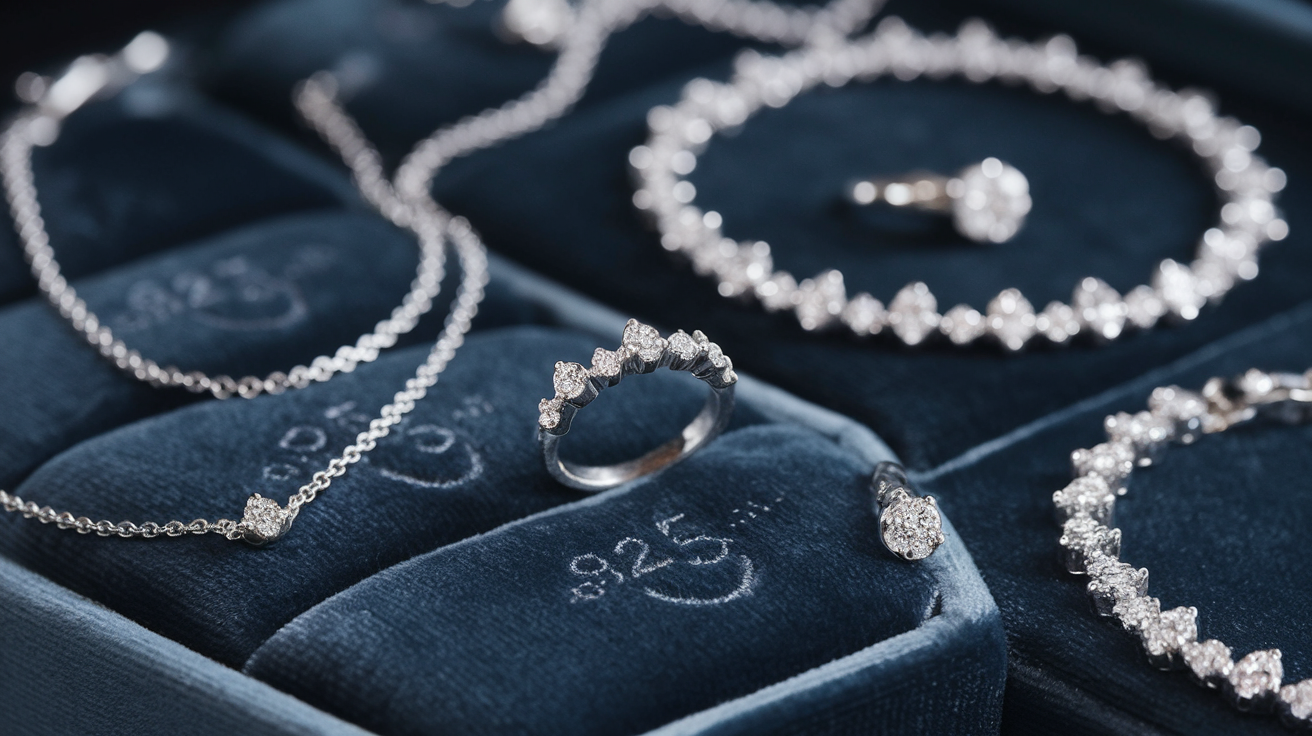 The Timeless Elegance of 925 Sterling Silver
The Timeless Elegance of 925 Sterling SilverHave you ever admired the lustrous shine of a silver piece and wondered what makes it so special? In the world of jewelry, 925 sterling silver stands as a hallmark of quality, elegance, and craftsmanship. This remarkable alloy—composed of 92.5% pure silver and 7.5% other metals (typically copper)—offers the perfect balance between durability and beauty. While pure silver alone would be too soft for everyday wear, sterling silver provides the strength needed for lasting jewelry while maintaining that coveted silvery brilliance that complements every skin tone and style.
From intricately designed pendants to statement rings, sterling silver's versatility has made it a beloved choice for jewelry enthusiasts worldwide. ✨ Yet, with its growing popularity comes the challenge of distinguishing authentic pieces from imitations. How can you be sure you're investing in genuine 925 sterling silver? What makes this particular alloy worth seeking out? In this comprehensive guide, we'll explore everything you need to know about sterling silver—from identification techniques and care instructions to comparisons with other metals and smart buying strategies that ensure you get the quality you deserve.
Understanding 925 Sterling Silver: What Makes It Special
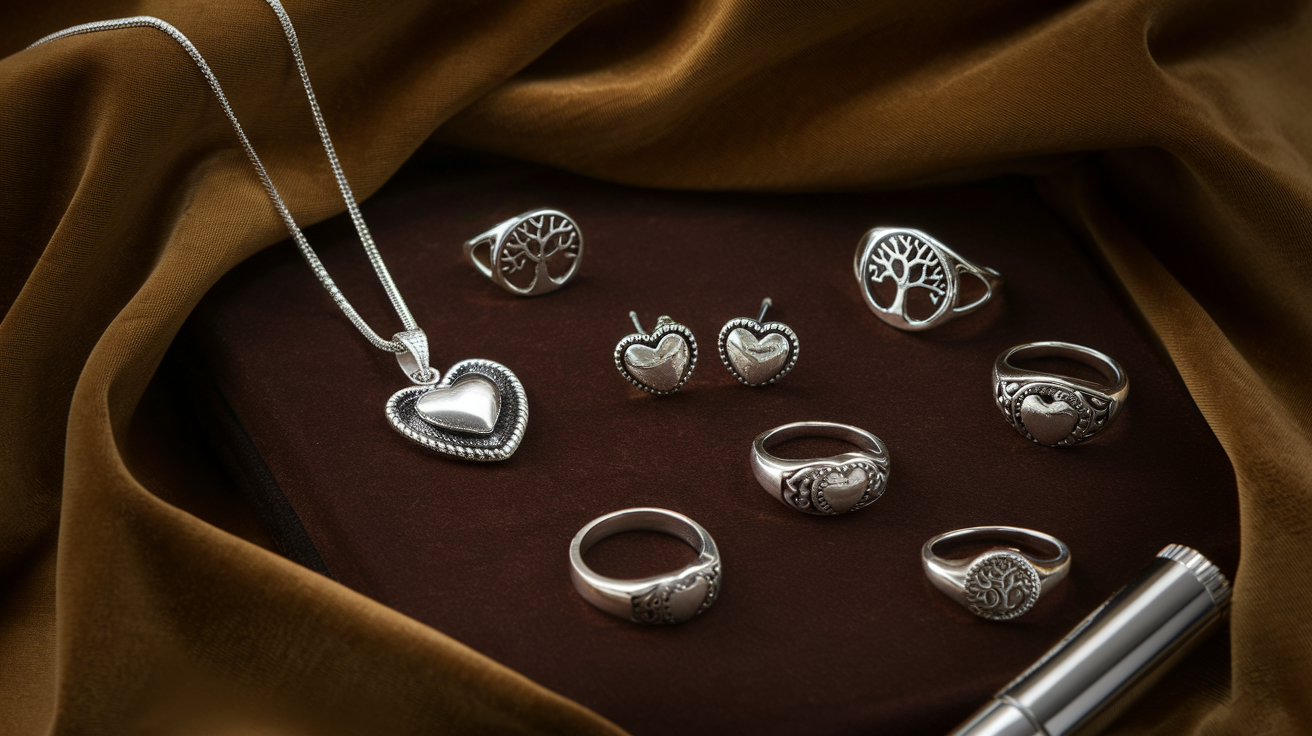 Understanding 925 Sterling Silver: What Makes It Special
Understanding 925 Sterling Silver: What Makes It SpecialComposition: 92.5% Pure Silver and 7.5% Other Metals
Sterling silver, often marked as 925 silver, consists of a precise alloy of 92.5% pure silver and 7.5% other metals. The primary metal mixed with silver is typically copper, which creates an alloy with enhanced properties. This specific ratio wasn't chosen randomly – it represents an optimal balance that preserves silver's beautiful luster while significantly improving its functional characteristics. The "925" hallmark you see on jewelry directly refers to this composition, indicating the silver content meets the minimum millesimal fineness of 925 parts per thousand.
The legal definition of sterling silver has a rich history dating back to 1275 during Edward I's reign, when standards for silver coinage were first established. This composition has remained remarkably consistent throughout the centuries, becoming the global benchmark for quality silver.
Why Sterling Silver Is More Durable Than Pure Silver
Pure silver, while visually stunning with its brilliant white sheen, is impractically soft for everyday use. At 99.9% purity, fine silver is too malleable to maintain intricate designs or withstand regular wear. This is where sterling silver's genius lies – the addition of just 7.5% other metals, primarily copper, transforms silver into a remarkably durable material.
The copper alloy strengthens the silver substantially, making it resistant to bending, scratching, and deformation. This enhanced durability allows artisans to create intricate designs that would be impossible with pure silver. The resulting material retains the beautiful appearance of silver while being practical for jewelry, tableware, and decorative items that experience daily use.
While sterling silver is more durable, it does have one drawback compared to pure silver – it can tarnish due to the reaction between copper and sulfur compounds in the air. However, newer sterling silver alloys sometimes incorporate elements like germanium and platinum to minimize tarnishing while maintaining durability.
Global Standards and Variations in Silver Purity
While 925 sterling silver is the most recognized standard globally, silver purity standards can vary across different regions and applications. The hallmarking systems that emerged in various countries serve to verify the purity of silver and prevent counterfeits. These markings provide consumers with assurance about the quality of their silver items.
In Colonial America, silversmiths adhered to standards similar to those set by the London Goldsmiths Company, crafting everything from simple buckles to elaborate coffee pots. During the Industrial Revolution, particularly between 1840 and 1940, mass production of sterling silver items became common, especially for cutlery and tableware.
Beyond the standard 925 sterling silver, some countries have their own variations. The ".999 FS" or "99.9" markings indicate fine silver with 99.9% purity, which is used primarily for art pieces rather than functional items due to its softness. The global consistency of the 925 standard, however, ensures that sterling silver maintains its reputation for quality across borders.
Now that we have covered what makes 925 sterling silver special, let's explore how you can identify authentic sterling silver pieces in the next section, where we'll discuss hallmarks, testing methods, and ways to distinguish genuine sterling silver from imitations.
How to Identify Authentic 925 Sterling Silver
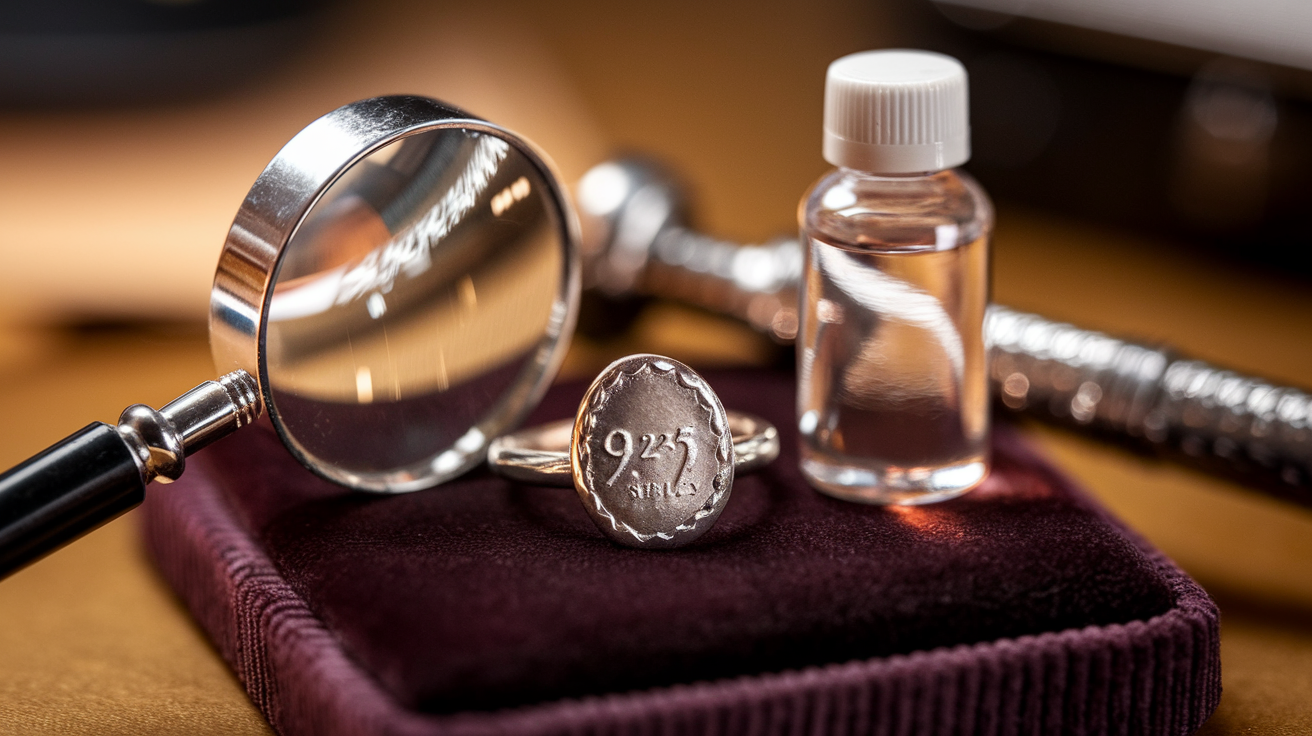 How to Identify Authentic 925 Sterling Silver
How to Identify Authentic 925 Sterling SilverNow that we understand what makes 925 sterling silver special with its 92.5% pure silver content, let's explore how to verify the authenticity of sterling silver items you might consider purchasing.
Common Hallmarks and Stamps to Look For
Hallmarks serve as quality assurance indicators that have been used for centuries, dating back to ancient Egypt and Rome, before becoming standardized in medieval Europe through guild systems. When examining silver jewelry, look for these key markings:
-
Purity marks: The most common is "925," indicating 92.5% pure silver content. Other purity marks include "800" (80% silver, common in Germany), "950" (Britannia standard), and "999" (fine silver).
-
Maker's marks: These identify the silversmith or manufacturer, which can significantly enhance an item's value if associated with renowned artisans or brands like Tiffany & Co., Cartier, Georg Jensen, or David Yurman.
-
Assay office marks: These verify where the silver was tested for purity. While the U.S. lacks mandatory assay offices, countries like the UK feature distinctive symbols from various assay locations.
-
Date letters: Though voluntary since 1999, these provide information about when the jewelry was created, using a letter system that cycles every 25 years.
To examine hallmarks effectively, use a magnifying glass as these stamps are often located in less visible areas of jewelry. Digital apps specifically designed for identifying hallmarks can also be helpful.
The Magnet Test: A Simple Way to Verify Authenticity
A practical method to test the authenticity of sterling silver is the magnet test. Genuine sterling silver is not magnetic. If your silver piece strongly attracts to a magnet, it likely contains significant amounts of other metals and may not be authentic sterling silver. However, be aware that some counterfeit items may pass this test, so it should be used in conjunction with examining hallmarks.
Price Considerations When Shopping for Sterling Silver
Price can be a telling indicator when purchasing sterling silver. Authentic sterling silver has intrinsic value due to its 92.5% silver content. If an item marketed as sterling silver is priced suspiciously low, it may be silver-plated rather than solid sterling.
When evaluating prices, consider:
-
The weight of the piece (heavier items contain more silver and should cost more)
-
The complexity of craftsmanship
-
The reputation of the brand or maker
-
Any special marks or historical significance that might enhance value
Be wary of items marked with "silver-plated" or manufacturers known primarily for silver-plated items, as these typically hold little value compared to genuine sterling silver.
With this understanding of how to identify authentic 925 sterling silver, you'll be better prepared to appreciate the versatility and appeal of sterling silver jewelry, which we'll explore in the next section.
The Versatility and Appeal of Sterling Silver Jewelry
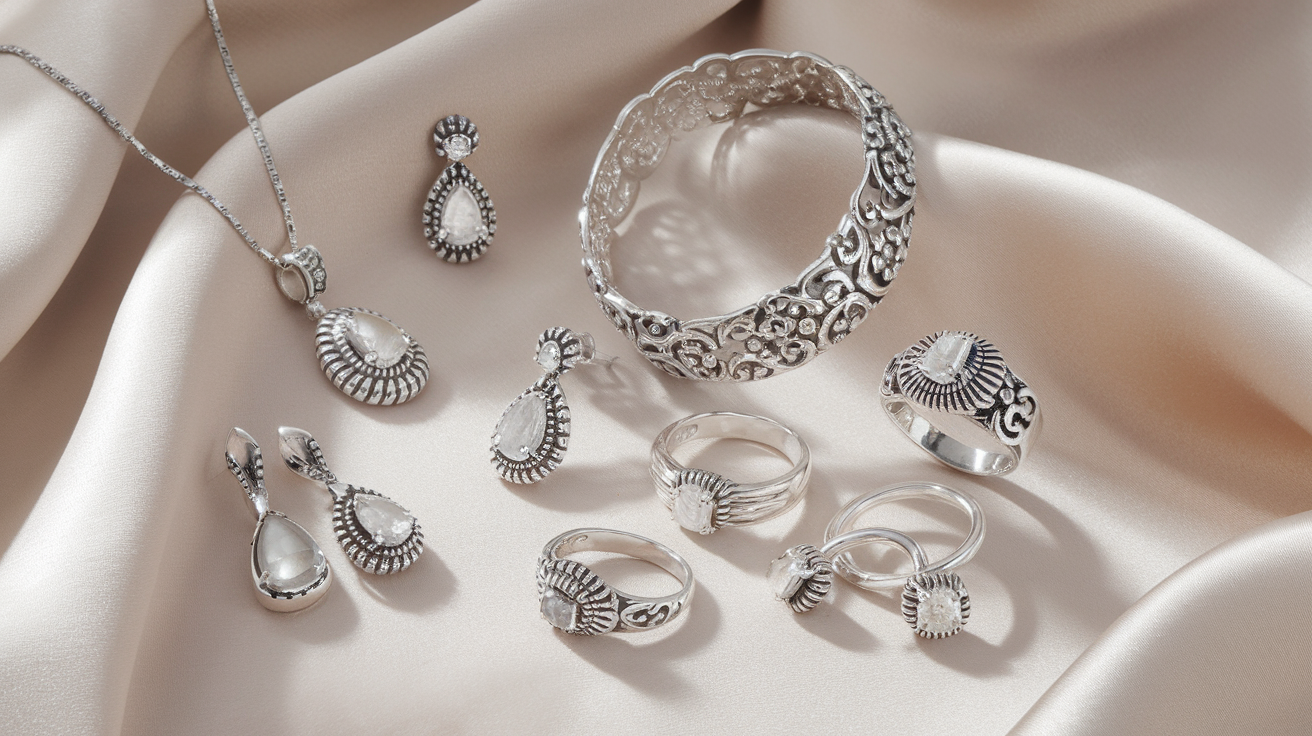 The Versatility and Appeal of Sterling Silver Jewelry
The Versatility and Appeal of Sterling Silver JewelryNow that we've examined how to identify authentic 925 sterling silver, let's explore the remarkable versatility and enduring appeal that makes this precious metal a favorite among jewelry enthusiasts worldwide.
Types of Jewelry Pieces Commonly Made with Sterling Silver
Sterling silver's exceptional combination of luster and resilience makes it ideal for crafting a wide variety of jewelry pieces. Its strength and durability allow jewelers to create intricate designs that would be impractical with pure silver, which is too soft for everyday wear. The 925 silver composition provides the perfect balance between beauty and functionality, making it suitable for:
-
Delicate necklaces and pendants
-
Intricate earrings and studs
-
Statement rings and bands
-
Bracelets and bangles
-
Anklets and body jewelry
The versatility of sterling silver allows it to be fashioned into both contemporary designs and traditional pieces that reflect cultural heritage, appealing to those who value artistic expression in their accessories.
Why Sterling Silver Complements All Skin Tones
One of the most remarkable qualities of sterling silver is its universal flattering effect on all skin tones. The cool, lustrous sheen of properly maintained 925 silver creates a striking contrast against warm skin tones while harmonizing beautifully with cooler complexions.
Unlike some metals that can clash with certain skin undertones, sterling silver provides a neutral yet elegant backdrop that enhances rather than competes with natural coloring. This versatility makes it an excellent choice for everyday wear across different seasons and occasions.
Additionally, sterling silver jewelry can contribute to overall skin appearance by promoting better blood circulation. The reference content suggests that wearing silver jewelry may enhance blood flow, which can result in healthier-looking skin.
Hypoallergenic Properties for Sensitive Skin
A significant advantage of 925 sterling silver is its hypoallergenic nature, making it an excellent choice for individuals with sensitive skin. By eliminating common irritants such as nickel and lead, quality sterling silver minimizes the risk of allergic reactions like rashes and swelling that other metal alloys might cause.
The antimicrobial properties inherent in silver offer additional benefits beyond mere aesthetics. Both pure silver and 925 sterling silver have been recognized for their ability to combat certain bacteria and viruses, potentially aiding in healing irritated skin. This makes sterling silver not just a beautiful accessory but also a practical choice for those concerned about skin health.
Furthermore, silver's natural conductivity may help regulate body temperature, keeping the skin cool during hot weather and potentially contributing to increased energy levels and overall well-being.
With these versatile qualities and health benefits in mind, next we'll examine how to properly care for your sterling silver to ensure its longevity and maintain its beautiful appearance for years to come.
Caring for Your Sterling Silver
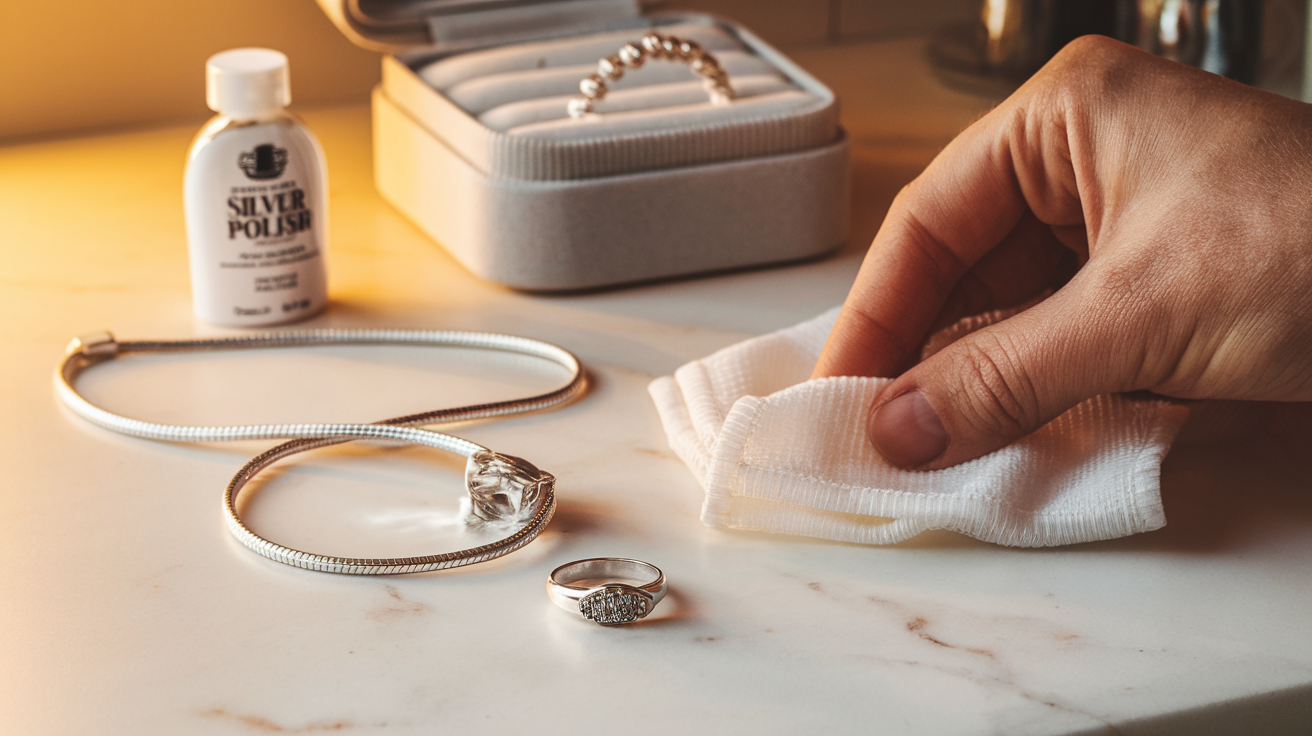 Caring for Your Sterling Silver
Caring for Your Sterling SilverNow that we've explored the versatility and appeal of sterling silver jewelry, it's important to understand how to properly maintain these beautiful pieces. Sterling silver, being an alloy of 92.5% silver and 7.5% copper, requires specific care to maintain its luster and extend its lifespan.
Understanding Tarnish: Causes and Prevention
Tarnish is a natural process that occurs when sterling silver reacts with sulfur-containing substances in the air. Unlike pure silver, sterling silver is more prone to tarnishing due to its copper content. Several factors can accelerate this process:
-
High humidity environments
-
Exposure to chlorine (swimming pools, hot tubs)
-
Contact with household chemicals
-
Perfumes, lotions, and other personal care products
While tarnish doesn't damage the underlying metal, it does affect the appearance of your sterling silver. Prevention is always easier than cleaning, so consider these preventive measures:
-
Store your silver in cool, dry places, preferably in airtight containers
-
Use anti-tarnish bags or cloths specifically designed for silver
-
Include silica gel packets in storage containers to absorb moisture
-
Keep silver jewelry separate from other metals
-
Wear your silver regularly—natural skin oils can actually help prevent tarnishing
-
Remove silver jewelry before swimming, bathing, or using cleaning products
Effective Cleaning Methods to Restore Shine
When tarnish does appear, several cleaning methods can restore your sterling silver's brilliance:
Dish Soap Method (For Light Cleaning)
-
Mix a few drops of mild dish soap in warm water
-
Soak the silver for 5-10 minutes
-
Gently scrub with a soft brush or sponge
-
Rinse thoroughly with warm water
-
Dry completely with a microfiber cloth to avoid scratches
Baking Soda Paste (For Moderate Tarnish)
-
Create a paste using baking soda and water
-
Apply the paste to the tarnished areas with a soft cloth
-
Gently rub in circular motions
-
Rinse thoroughly and dry completely
Aluminum Foil Method (For Stubborn Tarnish)
-
Line a bowl with aluminum foil, shiny side up
-
Place silver items in the bowl, ensuring they touch the foil
-
Pour boiling water mixed with baking soda and kosher salt
-
Allow to soak for up to 30 minutes
-
Rinse and dry thoroughly
Vinegar and Baking Soda (For Heavy Tarnish)
-
Mix white vinegar with baking soda and kosher salt
-
Soak heavily tarnished pieces for several hours
-
Rinse thoroughly and dry completely
Best Practices for Long-Term Maintenance
Regular maintenance is key to preserving the beauty of your sterling silver:
-
Clean your sterling silver at least twice a year, or immediately after exposure to harsh chemicals
-
For items on display, clean more frequently to prevent tarnish buildup
-
Use a sterling silver cleaning cloth between deep cleanings to maintain shine
-
Consider professional cleaning for:
-
Delicate or intricate pieces
-
Items with gemstones or vintage designs
-
Designer pieces (every 3-5 years)
-
Professional jewelers can not only clean your pieces thoroughly but also inspect settings and provide repairs if needed.
For everyday care, simply wiping your silver jewelry with a soft cloth after wearing can remove oils, moisture, and residue that contribute to tarnishing.
With these care practices in place, your sterling silver will maintain its beautiful luster for years to come. As we move forward to compare sterling silver with other metals in the next section, you'll understand why the minimal maintenance required for sterling silver makes it a practical choice compared to some alternatives.
Sterling Silver vs. Other Metals
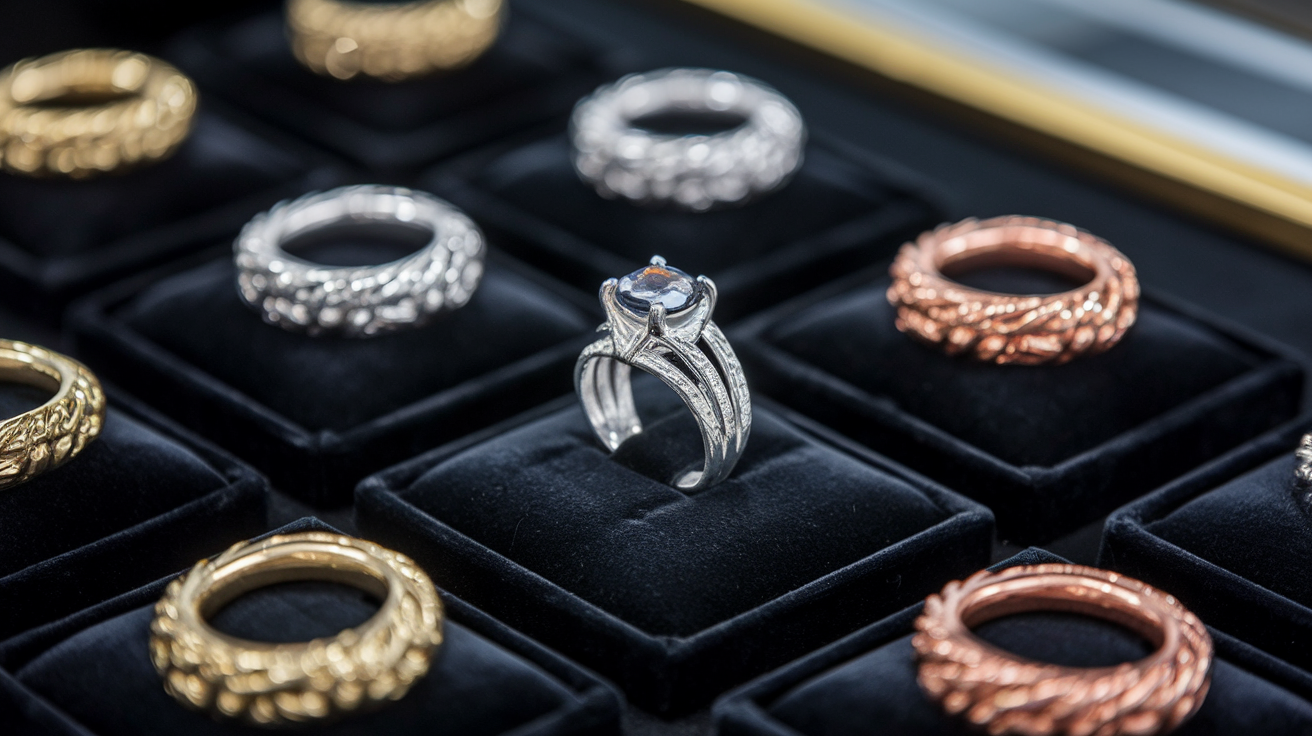 Sterling Silver vs. Other Metals
Sterling Silver vs. Other MetalsNow that we've covered how to properly care for your sterling silver to maintain its luster and longevity, let's compare 925 sterling silver to other metals commonly used in jewelry making. Understanding these differences will help you make informed decisions when investing in jewelry pieces.
Comparing Sterling Silver to Stainless Steel
Sterling silver and stainless steel represent two popular choices in the jewelry market, each with distinct characteristics:
-
Composition: While 925 sterling silver contains 92.5% pure silver with 7.5% copper, stainless steel is an alloy containing iron, chromium, and other metals.
-
Durability: Stainless steel offers superior scratch resistance compared to sterling silver, making it more suitable for everyday wear. However, sterling silver provides a traditional precious metal experience that stainless steel cannot match.
-
Hypoallergenic Properties: 925 sterling silver is generally hypoallergenic, making it an excellent choice for those with sensitive skin, though some may react to the copper content. Titanium steel (a type of stainless steel) is also known for being hypoallergenic.
-
Maintenance: Stainless steel requires minimal maintenance, while sterling silver needs regular cleaning to prevent tarnishing due to its copper content.
Weight, Feel, and Aesthetic Differences
The physical and visual differences between sterling silver and other metals create unique wearing experiences:
-
Weight: Sterling silver has a substantial weight that conveys quality and luxury, providing a satisfying presence on the finger, wrist, or neck.
-
Appearance: 925 sterling silver offers a bright, lustrous white appearance that stainless steel cannot fully replicate. Sterling silver also develops a unique patina over time that many collectors appreciate.
-
Customization: Sterling silver is highly versatile for design work and is available in countless styles and forms. While titanium steel is durable, it lacks the design flexibility of silver and cannot be resized.
-
Tarnishing: Unlike gold which scratches easily but doesn't tarnish, sterling silver will develop tarnish over time (silver oxide) that requires cleaning.
Investment Value and Market Considerations
When considering jewelry as an investment, several factors come into play:
-
Value Retention: While gold generally retains value better than silver, 925 sterling silver jewelry still holds intrinsic metal value and can be a more accessible investment option with rings typically costing around $45.
-
Longevity Factors: For maximum investment value in sterling silver, look for:
-
Authentic 925 stamps indicating true sterling silver content
-
Thicker rhodium plating to slow oxidation
-
Classic styles rather than trendy designs
-
Solid construction rather than complex electroplating
-
-
Cost-Effectiveness: Sterling silver offers an excellent balance of beauty, durability, and affordability compared to gold and platinum.
-
Market Availability: 925 sterling silver jewelry is widely available in various designs, offering more options than less common silver alloys like 935 silver (93.5% silver content).
With this understanding of how sterling silver compares to other metals, next we'll explore our buying guide for finding quality sterling silver pieces, including how to verify authenticity and select pieces that will stand the test of time.
Buying Guide: Finding Quality Sterling Silver
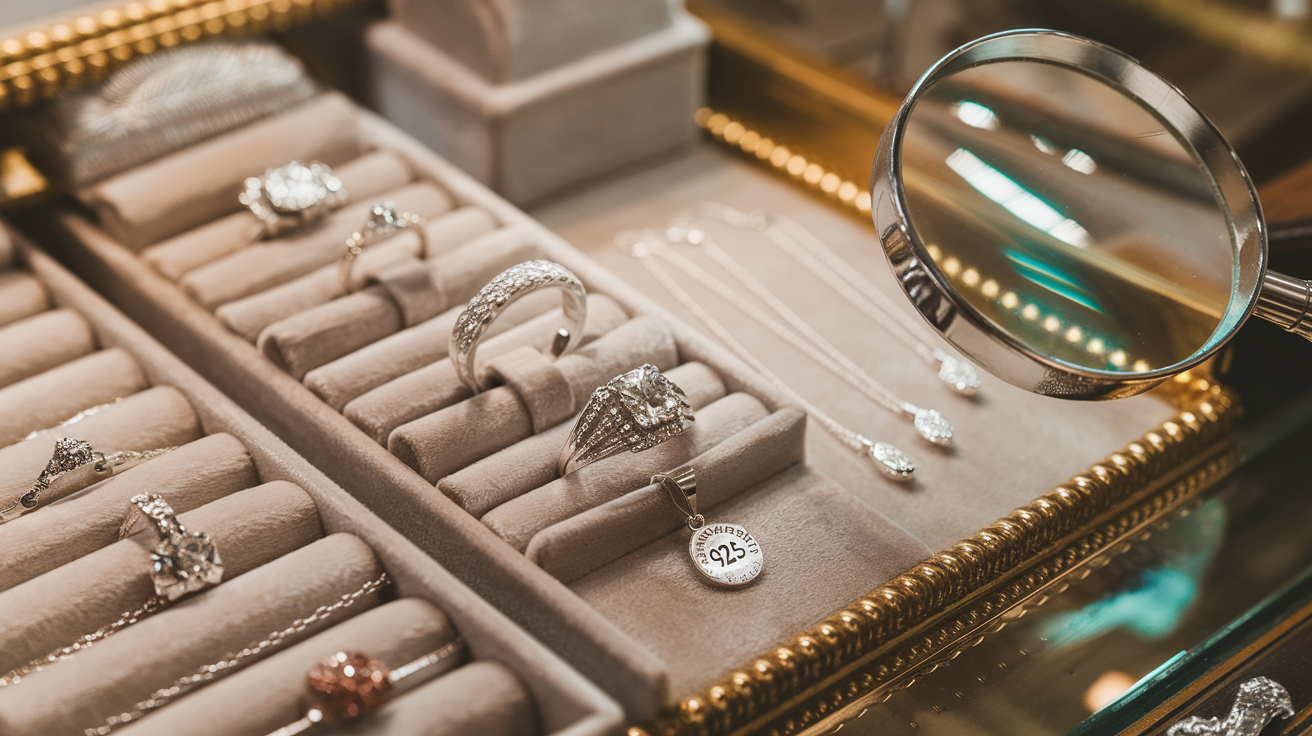 Buying Guide: Finding Quality Sterling Silver
Buying Guide: Finding Quality Sterling SilverNow that we've explored how sterling silver compares to other metals, let's focus on how to make informed purchasing decisions when shopping for quality 925 sterling silver pieces.
Importance of Purchasing from Reputable Sources
Buying sterling silver from trustworthy vendors is crucial for ensuring authenticity and quality. Reputable sellers like Taba Silver Egypt specialize in genuine 925 sterling silver pieces and provide certification to guarantee authenticity. These established sources maintain high standards in their products, offering exclusive designs while ensuring the proper 92.5% silver content that defines true sterling silver.
When purchasing from reliable sources, you benefit from their commitment to quality control and ethical business practices. These vendors typically have transparent policies regarding the materials used in their jewelry, including information about any gemstones incorporated into the pieces. Their reputation depends on delivering authentic products that meet customer expectations for durability and appearance.
Spotting Low-Quality Imitations and Avoiding Scams
To protect yourself from counterfeit sterling silver, always check for the "925" hallmark or related authenticity stamps. Genuine sterling silver has distinctive characteristics including proper weight and a characteristic shine that differs from plated alternatives.
Be wary of pieces that:
-
Lack proper hallmarks
-
Feel unusually light for silver
-
Have an overly bright white appearance (which may indicate excessive rhodium plating)
-
Are priced significantly below market value
Some simple home tests can help confirm authenticity when you're uncertain. Additionally, understanding the different finishing techniques used in sterling silver jewelry—such as high-polished, rhodium-plated, or oxidized finishes—can help you identify potential imitations that don't exhibit the expected properties of these treatments.
What to Expect in Terms of Pricing for Authentic Pieces
Authentic 925 sterling silver is available at more accessible price points than pure silver or precious metals like gold, while still offering a luxurious appearance and quality. However, several factors influence the pricing of sterling silver jewelry:
-
Finishing technique: High-polished pieces with mirror-like finishes or rhodium-plated items may command higher prices due to additional processing and enhanced durability.
-
Gemstone quality: For stone-adorned sterling silver jewelry, the cut, clarity, and setting of gemstones significantly affect the overall value.
-
Craftsmanship: Intricate designs or handcrafted pieces typically cost more than mass-produced items.
-
Brand reputation: Established sellers with proven track records often price their pieces higher, reflecting their quality assurance and customer service.
While seeking good value is natural, extremely low prices should raise suspicion. Quality sterling silver represents an investment in durability and elegance, with prices reflecting the 92.5% silver content, craftsmanship, and any additional features like gemstone embellishments or specialized finishes.
 The Timeless Allure of 925 Sterling Silver
The Timeless Allure of 925 Sterling SilverSterling silver stands as a testament to the perfect balance between luxury and practicality in the jewelry world. With its composition of 92.5% pure silver and 7.5% other metals (primarily copper), it offers durability that pure silver cannot match while maintaining an elegant appearance that complements all skin tones. Whether you're identifying authentic pieces through hallmarks like "925" or "STER," properly caring for your treasures to prevent tarnishing, or comparing sterling silver to other metals in the market, understanding this precious alloy empowers you to make informed decisions.
As you embark on your sterling silver journey, remember that quality pieces from reputable sources are investments that maintain their beauty and value over time. While authentic 925 silver may cost more than imitations, its hypoallergenic properties, timeless appeal, and ability to be restored to its original luster make it worth every penny. Whether you're treating yourself or searching for the perfect gift, sterling silver jewelry offers versatility for every occasion and style preference, creating pieces that can be cherished for generations to come.